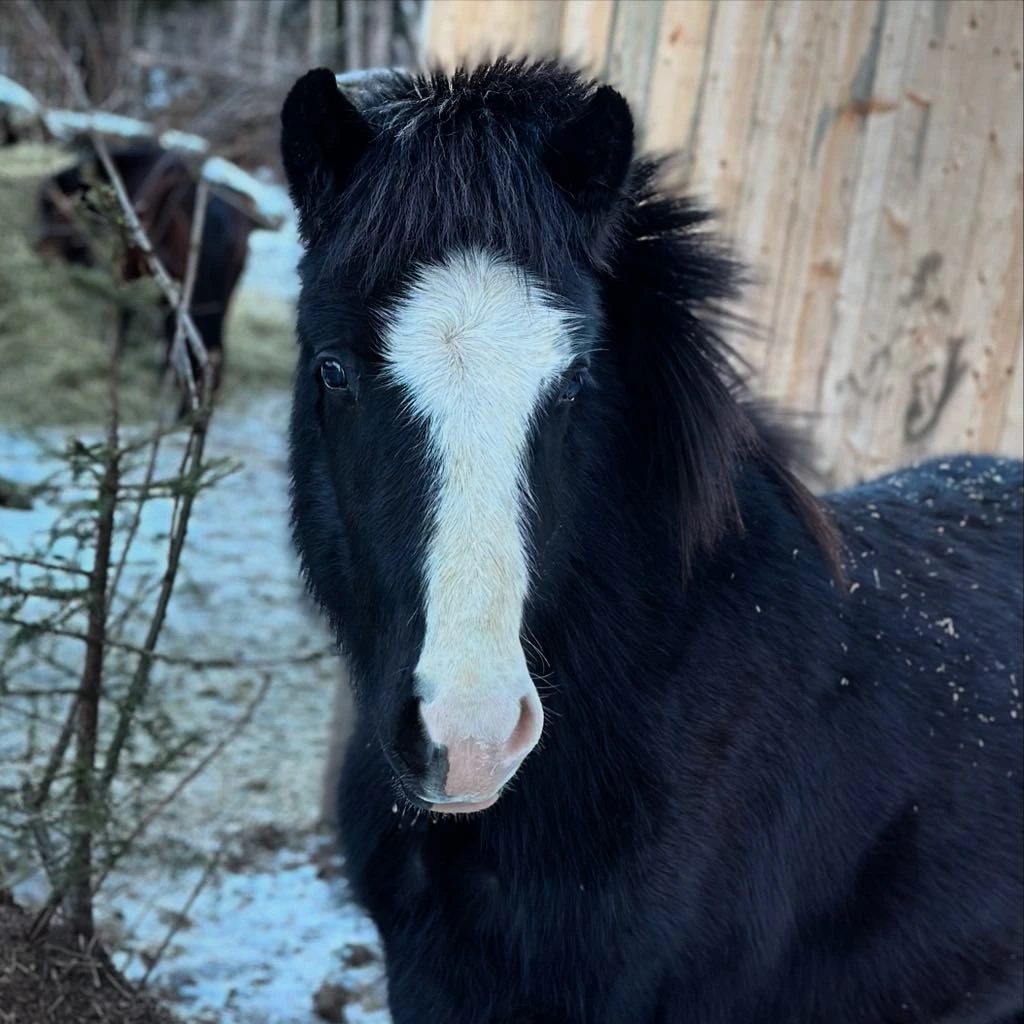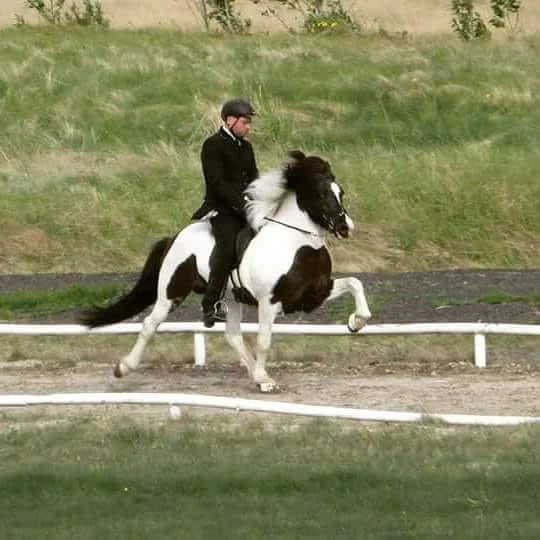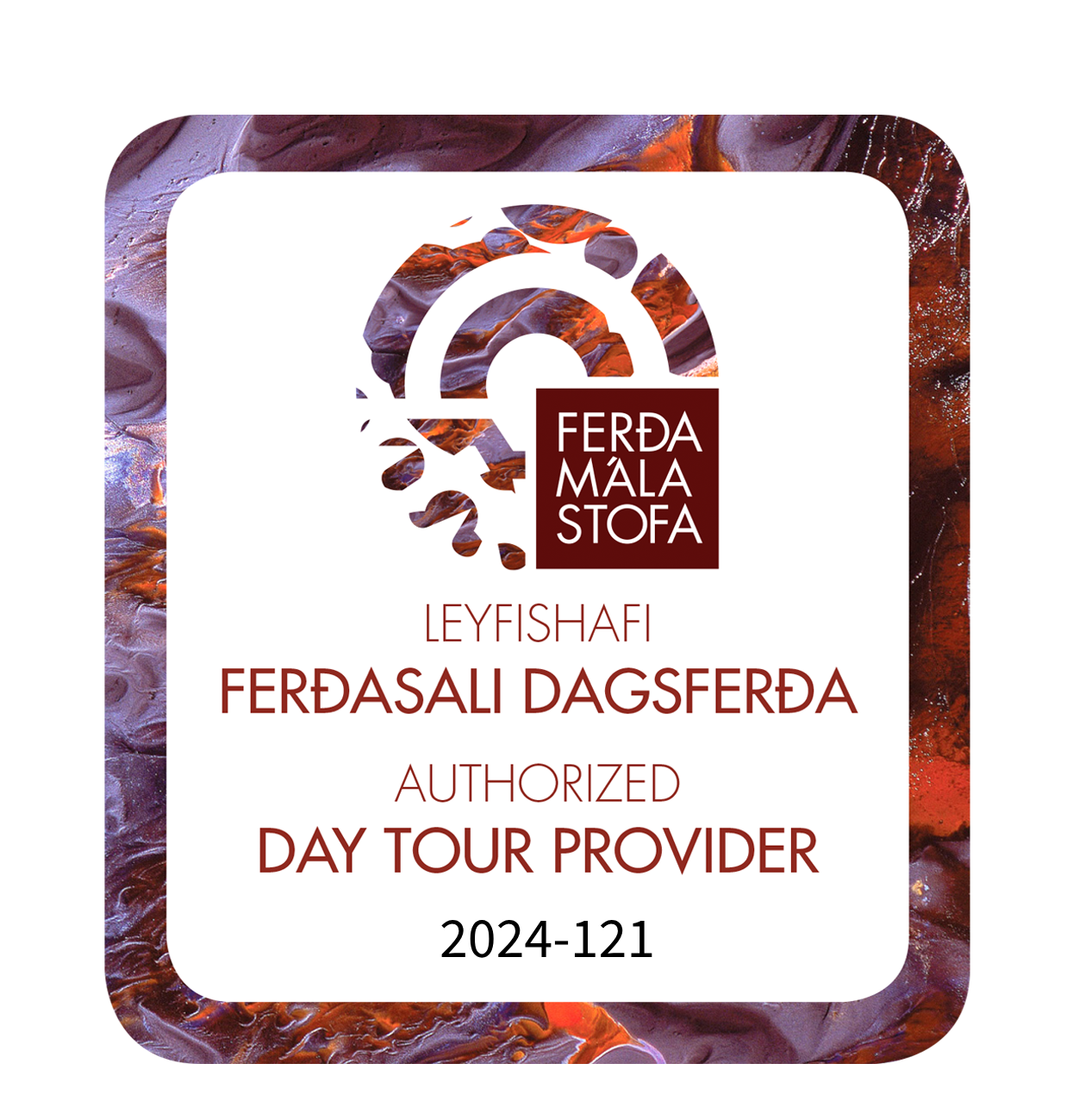The Icelandic horse
Ambassador of Iceland
The Icelandic horse is Iceland’s most honourable ambassador. It descends from horses brought during the settlement years and a few centuries onwards. Few (if any) horses have reached Iceland for more than a thousand years. Already in 982, the Parliament Alþingi passed a law prohibiting all imports of horses.
The ancestors of the Icelandic horse crossed the Atlantic from Scandinavia and the Keltic islands in relatively small wooden vessels, i.e. Viking ships. Many different horse breeds were brought at the time. Among them, three Norwegian breeds, Fjording, Nordlandshest and Gudbrandsdalshest, from Scotland, England, and Ireland, came to Eriskay and Exmoor ponies. Last but not least, to ensure the overall cuteness of the future breed, some Shetties were brought along from Shetland. Through the centuries, this broad DNA bank has been bred into what we today know as the Icelandic horse. The breed is considered one of the purest in the world. It is carefully registered in one of the better pedigree databases in the world: The Studbook of Origin of the Icelandic Horse, worldfengur.com.
Survival of the fit
The volcanic eruption in Laki near Kirkjubæjarklaustur 1783-1784 was a global tragedy and a significant event for the development of the Icelandic horse. The eruption led to massive deaths of livestock and humans in Iceland. It has been estimated that around 80% of the sheep and 50% of cattle and horses died from inhaling dust and toxic gases, eating polluted grass and drinking polluted water. The human death toll was also severe, as 20-25% of the Icelandic population died in the following years. It was not only Iceland that suffered. Dust, ash and toxic mist spread over Europe, and it has been estimated by examination of parish documents that the pollution caused more than 20.000 fatalities in Britain alone during the summer of 1783. The dust also had a longer-term cooling effect on the whole northern hemisphere. The resulting lack of harvest in Europe contributed to the French Revolution of 1789. Referring to C. Darwin and H. Spencer, one can assume that this high death toll must have had a significant evolutionary effect. The Icelandic horse is robust and tolerates colder and harsher conditions than most domesticated horse breeds. Every horse owner knows how terrifying the vet bills can be, and luckily, the Icelandic horse owner can expect relatively few of them. It can be argued and speculated that the Laki eruption is among the factors leading to this.
Export
Horses are flown from Iceland to New York, Norrköping, and Liege. Around 50% of the exported horses end up in Germany. The Icelandic horse is bred in several European countries and states in the US. Germany is a leading country in breeding Icelandic horses on the European continent.
To keep up with the constantly ongoing improvements of the horses in Iceland, generation after generation, many breeders on the continents choose to export mares that have been covered by elite stallions in Iceland. The black and blazed horse on the picture, Glampi from Engedahl, is an good example. Glampi is named after his legendary grandfather from Vatnsleysu. His mother, Aría from Hjallanesi, was covered by the highest judged Icelandic stallion Viðar frá Skör before she was exported to Sweden. Sometimes even elite stallions are exported and this was the case for Viðar who was exported to Denmark and is currently in Sweden, like his son Glampi.

The DNA coded gates
The Icelandic horse is gaited, offering the tölt as a fourth gate; some also have the fifth gait: the flying pace. The tölt is a smooth four-beat gait, like a fast walk, and the flying pace is a two-beat speed gait with lateral leg movements in opposition to the diagonal leg movement in the trot. The gait capability is coded in the horse’s DNA. Horses generally have three gaits: walk, trot and canter, and a specific mutation (DMRT3) gives the additional gaits. This mutation is also found in other gaited horses such as the Rocky Mountain horse, Missouri fox trotter and Peruvian Paso.
The DMRT3 mutation can be found in none, one or both polymers of the DNA, leading to the classifications CC, CA and AA, respectively. At least one A is needed for the horse to be five-gaited. Horses with CC composition are most certainly four-gaited and will likely choose the trot over the tölt. Often, this leads to difficulties for riders and horses in developing the tölt. For this reason, The Icelandic Agricultural Advisory Center advises against pairing two CA horses since 25% of the offspring will be CC. On the other hand, horses with AA composition are likely to have the fifth gait, and their preferred gait is often the tölt.
The brown pinto on the picture is Salvador from Hjallanesi, grandfather of the the black blazed Glampi, showing tölt with big movements. Salvador is a stallion with DMRT3 genotype AA.

EXPERIENCE THE ICELANDIC HORSE
Ride in Reykjavik is a wonderful experience available for everyone over 12 years old. The ride takes place in Rauðhólar landscape park in Reykjavík. Rauðhólar has been protected by a law on nature conservation since 1974. The experience takes around 2 hours. Daily departures at 9:30 and 13:30.
Ride the highlands of the south. The dedicated riders who want to explore the highlands from the back of the horse can choose between: Þórsmörk, Tindfjöll/fjallabak, Mýrdalsjökull and Landmannalaugar. Riding days are 3-5 with cabin accommodation, catering vehicle and a free running herd of horses.


